In the rapidly evolving world of electric vehicles, two names are emerging as contenders in the compact and SUV categories: the Kia EV3 and the Renault R5. Both models offer unique features, a commitment to sustainability, and a strong focus on technology. This article delves into a detailed comparison of these two electric cars, exploring their specifications, innovations, and what each brings to the table.
Kia EV3 vs Renault R5 – Which one offers the better deal?
Two cars, one duel: Kia EV3 meets Renault R5.
Which one wins in performance, efficiency and value for money? Find out now!
Design and Body Type
The Kia EV3 is designed as a compact SUV, offering a slightly larger and more robust presence on the road. With dimensions measuring 4300 mm in length and 1850 mm in width, it boasts a timelessly sporty look while providing ample interior space. In contrast, the Renault R5 is a hatchback with a more compact profile, measuring 3922 mm in length and 1744 mm in width. This design makes it particularly agile for urban environments, appealing to drivers who prioritize maneuverability and efficiency.
Performance and Powertrain
Under the hood, the Kia EV3 packs a punch with a power output of 204 HP from its electric motor, resulting in a torque of 283 Nm. It can accelerate from 0 to 100 km/h in just 7.5 seconds, showcasing its sporty capabilities while maintaining a respectable top speed of 170 km/h. The Renault R5, while less powerful with outputs ranging from 95 to 150 HP, delivers a commendable acceleration of 0 to 100 km/h in about 8 seconds. With torque figures that vary from 215 Nm to 245 Nm, it still provides an engaging driving experience.
Battery Life and Efficiency
When it comes to electric range and battery capacity, the Kia EV3 truly shines. It offers options with battery capacities of 58.3 kWh or 81.4 kWh, allowing for a range of up to 605 km on a single charge—ideal for longer journeys. On the other hand, the Renault R5, with a smaller 40 kWh battery, provides a convincing range up to 405 km. This makes the R5 suitable for city driving, but it may require more frequent charging for longer distances compared to its Kia counterpart.
Technology and Innovations
Both vehicles come equipped with state-of-the-art technology to enhance the driving experience. The Kia EV3 features an intuitive infotainment system, driver-assistance technologies, and connectivity options to keep drivers informed and entertained. In contrast, the Renault R5 emphasizes user-friendly interfaces alongside eco-friendly materials in its interior design, reflecting its dedication to sustainable living.
Space and Comfort
Interior comfort is key in the EV3, which offers seating for five passengers and a generous trunk capacity of 460 liters, making it a practical choice for families and travelers alike. The R5, while slightly smaller with a trunk capacity of 326 liters, also seats five comfortably but is more tailored for urban use—making it an excellent city car.
Conclusion: Choosing Your Electric Companion
In summary, both the Kia EV3 and Renault R5 cater to different segments of the electric vehicle market. The EV3 is perfect for those needing space, longer range, and a spirited drive, while the R5 appeals to urban drivers seeking compactness and efficiency. As electric vehicles continue to dominate the automotive landscape, choosing between them hinges on individual needs and lifestyle preferences.
Here’s where it gets real: The technical differences in detail
Costs and Efficiency:
When it comes to price and running costs, the biggest differences usually appear. This is often where you see which car fits your budget better in the long run.
Renault R5 has a evident advantage in terms of price – it starts at 23900 £, while the Kia EV3 costs 30800 £. That’s a price difference of around 6934 £.
In terms of energy consumption, the advantage goes to the Renault R5: with 14.80 kWh per 100 km, it’s slight more efficient than the Kia EV3 with 14.90 kWh. That’s a difference of about 0.10 kWh.
As for range, the Kia EV3 performs clearly perceptible better – achieving up to 605 km, about 200 km more than the Renault R5.
Engine and Performance:
Power, torque and acceleration are the classic benchmarks for car enthusiasts – and here, some clear differences start to show.
When it comes to engine power, the Renault R5 has a convincingly edge – offering 540 HP compared to 204 HP. That’s roughly 336 HP more horsepower.
In acceleration from 0 to 100 km/h, the Renault R5 is clearly quicker – completing the sprint in 3.50 s, while the Kia EV3 takes 7.50 s. That’s about 4 s faster.
In terms of top speed, the Renault R5 performs clearly perceptible better – reaching 270 km/h, while the Kia EV3 tops out at 170 km/h. The difference is around 100 km/h.
There’s also a difference in torque: Renault R5 pulls clearly stronger with 4800 Nm compared to 283 Nm. That’s about 4517 Nm difference.
Space and Everyday Use:
Beyond pure performance, interior space and usability matter most in daily life. This is where you see which car is more practical and versatile.
Both vehicles offer seating for 5 people.
In curb weight, Renault R5 is distinct lighter – 1447 kg compared to 1800 kg. The difference is around 353 kg.
In terms of boot space, the Kia EV3 offers clearly perceptible more room – 460 L compared to 326 L. That’s a difference of about 134 L.
In maximum load capacity, the Kia EV3 performs slightly better – up to 1251 L, which is about 145 L more than the Renault R5.
When it comes to payload, Kia EV3 slightly takes the win – 470 kg compared to 418 kg. That’s a difference of about 52 kg.
Who comes out on top?
Overall, the Renault R5 shows itself to be dominates this comparison and secures the title of DriveDuel Champion.
It convinces with the more balanced overall package and proves to be the more versatile choice for everyday use.
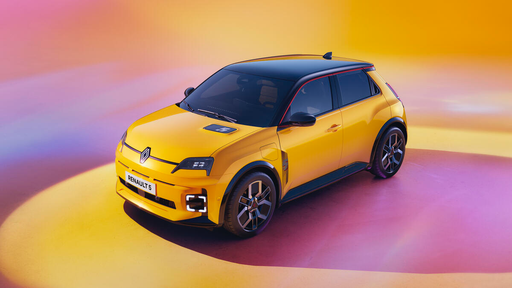 @ Renault Group Media
@ Renault Group Media
Renault R5
Kia EV3
The Kia EV3 arrives as a cheeky, practical electric compact that manages to feel both premium and playful, delivering crisp handling and a roomy cabin that's perfect for urban life. With smart tech, friendly styling and sensible pricing, the EV3 is the kind of car that makes switching to electric feel like a no-brainer without asking you to give anything important up.
details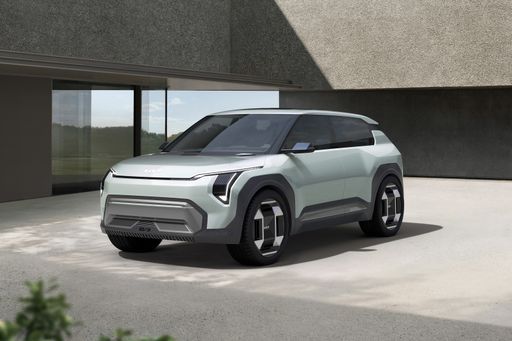 @ Kia Corporation
@ Kia Corporation
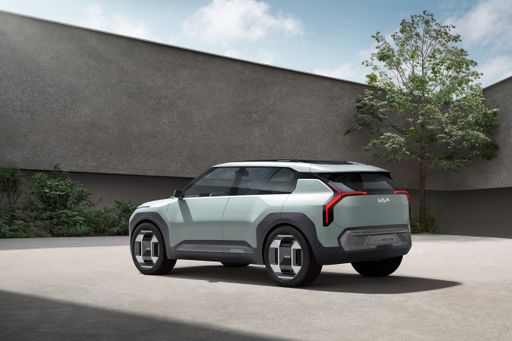 @ Kia Corporation
@ Kia Corporation
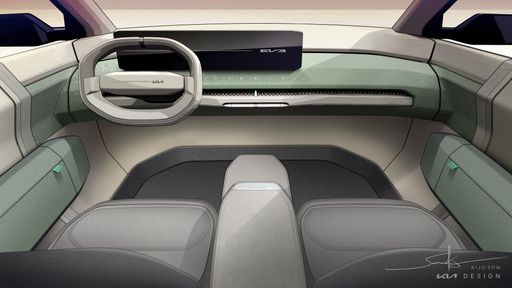 @ Kia Corporation
@ Kia Corporation
Renault R5
The Renault R5 is a classic hatchback that captured the imagination of drivers with its distinctive design and compact versatility. Its agile handling and efficient performance made it a popular choice in urban settings and winding country roads alike. With a blend of style and practicality, the Renault R5 remains a beloved icon in automotive history.
details @ Renault Group Media
@ Renault Group Media
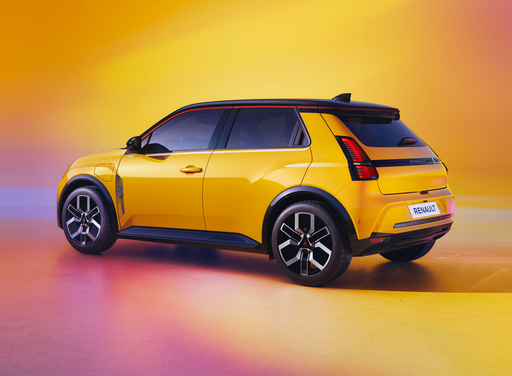 @ Renault Group Media
@ Renault Group Media
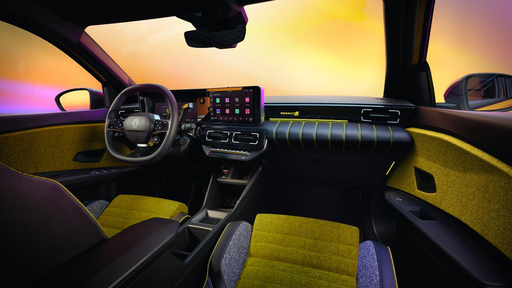 @ Renault Group Media
@ Renault Group Media
 @ Kia Corporation
@ Kia Corporation
|
 @ Renault Group Media
@ Renault Group Media
|
|
|
|
Costs and Consumption |
|
|---|---|
|
Price
30800 - 41700 £
|
Price
23900 - 137100 £
|
|
Consumption L/100km
-
|
Consumption L/100km
-
|
|
Consumption kWh/100km
14.9 - 16.2 kWh
|
Consumption kWh/100km
14.8 - 15.2 kWh
|
|
Electric Range
436 - 605 km
|
Electric Range
307 - 405 km
|
|
Battery Capacity
58.3 - 81.4 kWh
|
Battery Capacity
40 - 52 kWh
|
|
co2
0 g/km
|
co2
0 g/km
|
|
Fuel tank capacity
-
|
Fuel tank capacity
-
|
Dimensions and Body |
|
|---|---|
|
Body Type
SUV
|
Body Type
Hatchback
|
|
Seats
5
|
Seats
2 - 5
|
|
Doors
5
|
Doors
3 - 5
|
|
Curb weight
1800 - 1885 kg
|
Curb weight
1447 - 1524 kg
|
|
Trunk capacity
460 L
|
Trunk capacity
326 L
|
|
Length
4300 - 4310 mm
|
Length
3922 - 4080 mm
|
|
Width
1850 mm
|
Width
1744 - 2030 mm
|
|
Height
1560 - 1570 mm
|
Height
1380 - 1498 mm
|
|
Max trunk capacity
1251 L
|
Max trunk capacity
1106 L
|
|
Payload
470 kg
|
Payload
396 - 418 kg
|
Engine and Performance |
|
|---|---|
|
Engine Type
Electric
|
Engine Type
Electric
|
|
Transmission
Automatic
|
Transmission
Automatic
|
|
Transmission Detail
Reduction Gearbox
|
Transmission Detail
Reduction Gearbox
|
|
Drive Type
Front-Wheel Drive
|
Drive Type
Front-Wheel Drive, Rear-Wheel Drive
|
|
Power HP
204 HP
|
Power HP
122 - 540 HP
|
|
Acceleration 0-100km/h
7.5 - 7.9 s
|
Acceleration 0-100km/h
3.5 - 9 s
|
|
Max Speed
170 km/h
|
Max Speed
150 - 270 km/h
|
|
Torque
283 Nm
|
Torque
225 - 4800 Nm
|
|
Number of Cylinders
-
|
Number of Cylinders
-
|
|
Power kW
150 kW
|
Power kW
90 - 397 kW
|
|
Engine capacity
-
|
Engine capacity
-
|
General |
|
|---|---|
|
Model Year
2024
|
Model Year
2025 - 2027
|
|
CO2 Efficiency Class
A
|
CO2 Efficiency Class
A
|
|
Brand
Kia
|
Brand
Renault
|
What drive types are available for the Kia EV3?
The Kia EV3 is offered with Front-Wheel Drive.
The prices and data displayed are estimates based on German list prices and may vary by country. This information is not legally binding.
